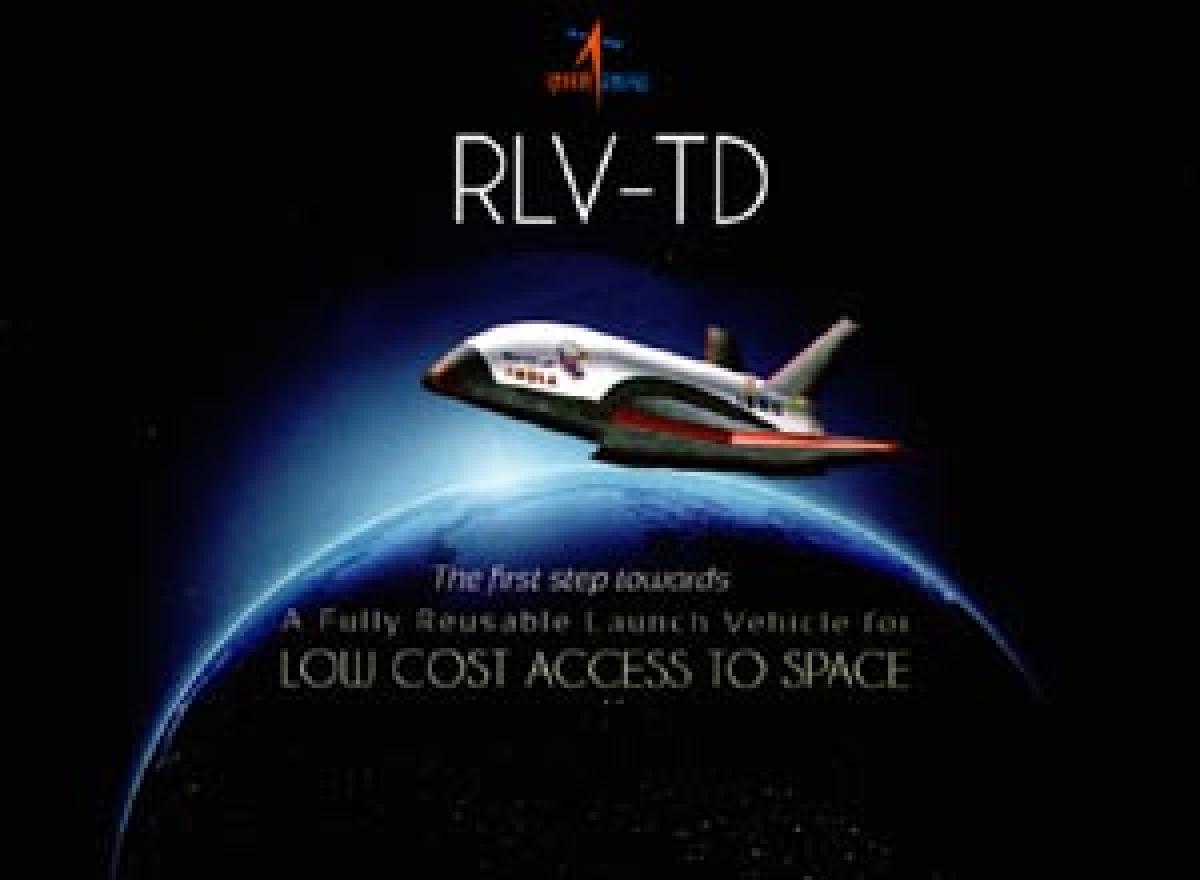Live
- Atul Subhash’s Suicide Sparks Outrage; Estranged Wife, Judge Accused of Harassment
- Malaria cases, deaths in India decline by 69pc between 2017-2023: WHO
- ED raids three places in Bengal in online forgery scam case
- Manchu Manoj Questioned by Police Amid Family Dispute
- Bengaluru: IMD Issues Yellow Alert Amid Upcoming Rainfall
- Manchu Vishnu Addresses Media, Clarifies Incident Involving Mohan Babu
- HPCL inks pact with Sea6 Energy to convert seaweed biomass into fuels
- Numaish 2025: Hyderabad’s Grand Exhibition Kicks Off in January – All You Need to Know
- There will be opportunities from every crisis, says CM Chandrababu at collectors' conference
- Women now own 20.5 pc of MSMEs in India, startups surge in tier 2 and 3 cities
Just In

For the very first time in its history, the Indian Space Research Organisation (ISRO) is actually growing wings as it embarks this month on a never before space flight that would make history.
Thiruvananthapuram: For the very first time in its history, the Indian Space Research Organisation (ISRO) is actually growing wings as it embarks this month on a never before space flight that would make history.
The Indian space agency is all set to undertake the maiden launch of its very own indigenous version of a 'space shuttle', a fully made-in-India effort. On Sunday, a sleek winged body almost the weight and size of a sports utility vehicle (SUV) is being given final touches at Sriharikota awaiting the final countdown.
Very soon and, if all goes well, possibly before the monsoon sets in India's space port at Sriharikota on the coast of the Bay of Bengal will witness the launch of the indigenously made Reusable Launch Vehicle - Technology Demonstrator (RLV-TD).
This will be the first time ISRO will launch a space craft, which actually has delta wings and after launch it will be glided back onto a virtual runway in the Bay of Bengal. For ISRO, no dream is too big as it carefully forges ahead to have a fully 'swadeshi space shuttle'. ISRO's big leap, embarks on launching Indian space shuttle!
May be sooner than later the RLV should be named the 'Kalamyaan' after India's legendary former President APJ Abdul Kalam, an aeronautics engineer par excellence who made top class rockets and dreamt big of India being propelled to become a developed country.
Yes, the big powers abandoned the idea of a winged reusable launch vehicle but India's frugal engineers believe the solution to reducing cost of launching satellites into orbit is to recycle the rocket or make it reusable. Scientists at ISRO believe that they could reduce the cost of launching stuff into space by as much as 10 times if reusable technology succeeds, bringing it down to USD 2,000 per kg.
The RLV-TD is unlikely to be recovered from sea during this experiment as it is expected that the vehicle will disintegrate on impact with water since it is not designed to float. The purpose of the experiment is not to see it float but to glide and navigate from a velocity five times higher than the speed of sound onto a designated virtual runway in the Bay of Bengal some 500 km from the coast.
Very similar in its looks to the American space shuttle, the RLV-TD being experimented is a scale model which is almost 6 times smaller than the final version. Vikram Sarabhai Space Centre director K Sivan says, "These are just the first baby steps towards the big Hanuman leap." The final version will take at least 10-15 years to get ready since designing a human rated reusable rocket is no kid stuff.
The only countries that have attempted operational flights of a space shuttle are America, which flew its space shuttle 135 times and then retired it in 2011 and since then it lost its capacity to send astronauts in space on American made rockets. The Russians made only a single space shuttle and called it Buran it flew into space just once in 1989. After that the French and Japanese have made some experimental flights and from available literature it seems the Chinese have never attempted a space shuttle.
The special booster or the first stage of the shuttle is powered using a solid fuel and it will hoist the RLV-TD experiment to about 70 km into the atmosphere from where the descent will begin. During the descent, phase which is essentially a glider like event small thrusters will help the vehicle to be navigated on to the exact spot where it is supposed to land.
Ships, satellites and radars will monitor its descent. The current experimental version has no undercarriage so it cannot be brought back onto land and India lacks a runway that is longer than 5 km in length to accommodate such a landing. Some private billionaires with very active support from NASA have been trying to master vertical lift-off and vertical landing as part of trying to recycle rocket engines.
SpaceX is a company owned by South Africa-born billionaire Elon Musk which became big through the Internet economy and has been able to land its Falcon-9 rocket onto a sea-based platform. On the same lines the company Blue Origin owned by Jeff Bezos landed its New Shepard rocket on land in Texas. Bezos, another billionaire, made it big by building the Amazon online trading platform. In fact, NASA chief General Charles Bolden, when he was in New Delhi recently, said the competition has shifted to a fight among billionaires to reduce the cost of launching satellites into space.
By Pallava Bagla

© 2024 Hyderabad Media House Limited/The Hans India. All rights reserved. Powered by hocalwire.com







